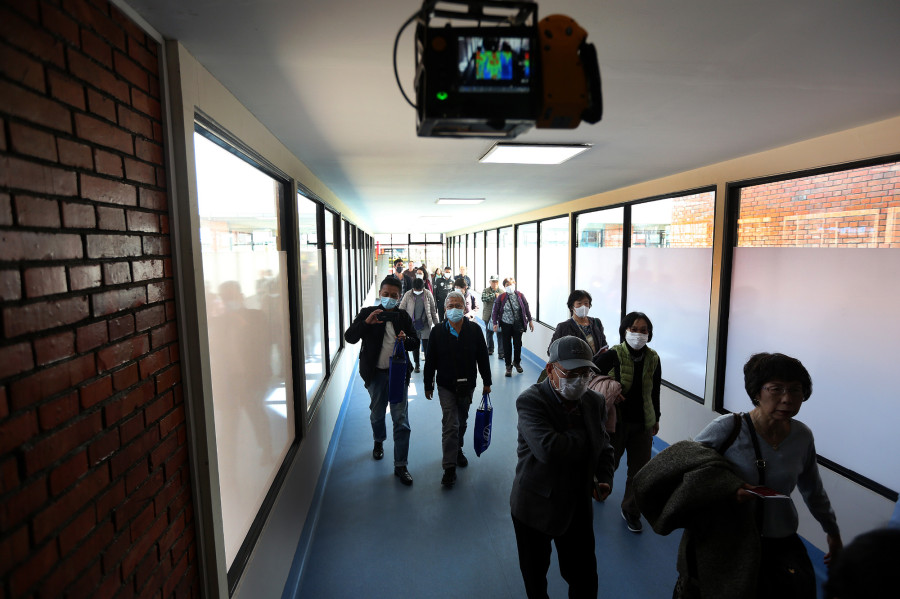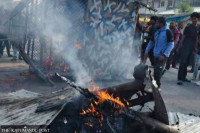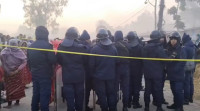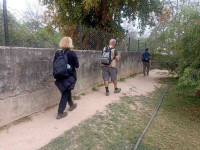National
Government focuses on Nepalis in Hubei, but travellers from rest of China are neither screened nor quarantined
Three health workers screening hundreds of passengers at TIA is a tough ask, chief doctor says
Arjun Poudel
The government plans to evacuate citizens from China’s Hubei, the epicentre of the coronavirus outbreak in China, but Nepalis from the rest of the country are already returning home on their own, that too in hordes. However, the country’s only international airport neither quarantines nor screens them or anyone else returning from China.
As health experts express concern about the lack of a quarantine facility in the country, and the risk of virus spreading, the government is still undecided on where Nepali evacuees will be isolated after they are brought to Kathmandu.
Dr Bibek Kumar Lal, director at the Epidemiology and Disease Control Division, said people returning from China are at high risk and that they need to be quarantined for their own safety as well as that of other people. "But many seem to be going home and we can’t trace them,” said Lal.
Nepal’s approach to the situation has been different from that of other countries. Governments around the world are isolating returnees from China for at least 14 days to ensure they do not spread the nCoV-2019 strain of the virus, which has already killed 361 and infected over 17,000 worldwide.
"The government is yet to put a proper plan to quarantine people coming from China, except for those it plans to evacuate itself,” said Dr Nishant Thakur, who leads a 10-member team of health workers manning the Tribhuvan International Airport’s health desk in shifts. There are only three people at the desk at one time, screening hundreds of passengers.
"Nepalis are returning from China on their own and those who do not have a fever or influenza-like symptoms are going home straight from the airport," said Thakur.
Currently, six Chinese carriers—Air China, China Southern, China Eastern, Sichuan Airlines, Cathy Dragon and Tibet Airlines—connect Kathmandu with China. Neither the health desk nor the Civil Aviation Authority of Nepal maintains records of passengers.
"People are coming to Nepal every day from China, and we do not know where all they are going and who they are meeting," an official at the Epidemiology and Disease Control Division, told the Post on a condition of anonymity because he was not allowed to speak to the media. "Not only those returning from Hubei but all those coming from entire China should be treated as a high-risk group."
According to Thakur, his desk refers passengers with fever or influenza-like symptoms to Sukraraj Tropical and Infectious Hospital, Teku, the designated primary hospital for cases. Dr Basudev Pandey, director at the Teku hospital, confirmed to the Post that the airport health desk referred ‘some people’, including one Chinese to the hospital. "But all were discharged after they tested negative," said Pandey. "We have asked those who came to our hospital to contact us if they develop influenza-like symptoms."
Officials at the Teku hospital, however, said some of the people returning from China have been visiting the hospital on their own volition, but none has been admitted. "We have vacated an entire ward to isolate suspected cases, but no one wants to stay there,” said Dr Anup Bastola, spokesperson for the hospital. "We give them our contact numbers, counsel them and ask them to come to the hospital immediately if they develop influenza-like symptoms."
Meanwhile, the government has formed a committee to find a place to quarantine Nepali evacuees from Hubei, by Tuesday. Though officials have hinted the government could seek assistance from the Nepali Army, the force said it hasn’t received any request.
"If the government asks us to explore options, we will do it,” said Brigadier General Bigyan Dev Pandey, spokesperson for Nepal Army. “But the government has not given us any directions. If we are asked, we will make arrangements, but we need some safety measures provided to us.”




 13.12°C Kathmandu
13.12°C Kathmandu













%20(1).jpg&w=300&height=200)

